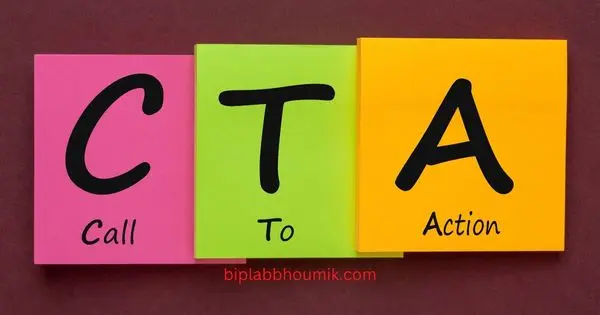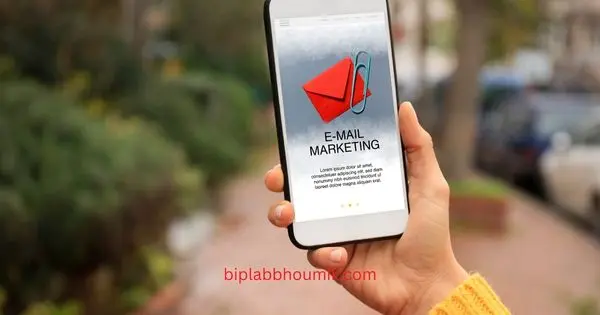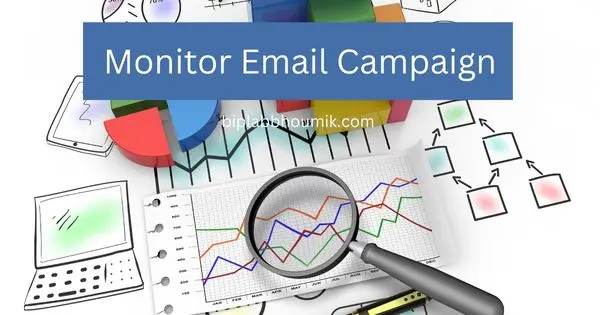Are you new to email marketing and feeling a little overwhelmed? Don’t worry, we’ve got you covered! In this blog, we’ll provide you with a comprehensive guide to email marketing tips for beginners. From crafting the perfect subject line to creating compelling calls to action, we’ll cover all the essential tips and best practices you need to know to create successful email campaigns.
Whether you’re a small business owner looking to promote your products or services, or a marketing professional looking to improve your skills, our email marketing tips for beginners will set you on the right path. So let’s get started!
What is Email Marketing?
Email marketing is a type of digital marketing that involves sending marketing messages or advertisements to a group of people via email. The goal of email marketing is usually to promote a product or service or to build a relationship with potential or current customers.
Email marketing campaigns can be used to reach out to new potential customers, to keep current customers informed about a business or organization’s products or services, or to re-engage with lapsed customers. Businesses and organizations use email marketing to communicate with their audience in a targeted, personalized way.

There are many different types of email marketing campaigns that businesses can use, including newsletters, promotional emails, transactional emails, and automated email sequences. Email marketing can be an effective way to reach a large audience, as long as the emails are well-written and relevant to the recipient. It is also important to follow best practices and laws related to email marketing, such as obtaining consent from recipients and including opt-out options
Email Marketing Tips
Email marketing can be a great way to reach out to potential customers and build relationships with existing ones. But it can also be a bit of a minefield – there are so many things to think about! From crafting the perfect subject line to segmenting your list, we’ve got you covered. Let’s have a look at how you can get a better result using email marketing.
1. Make your subject line relevant to your email
2. Use strong images
3. Proofread your emails multiple times
4. Include a call-to-action (CTA)
5. Personalize your emails for each recipient
6. Try out different marketing templates
7. Use automated email marketing tools
8. Monitor your email campaigns regularly
9. Use social media to promote your email campaigns
10. Track your results
1. Make Your Subject Line Relevant to Your Email
The success of an email marketing campaign largely depends on the subject line. Crafting a compelling and relevant subject line can help to ensure that your email stands out in the recipient’s inbox, and ultimately increases the likelihood that they will open it.
Your subject line is the first thing your recipients will see, so it’s important to make it catchy and relevant to the content of your email. Avoid using clickbait or vague subject lines, as they can lead to low open rates and even cause recipients to mark your emails as spam.
Consider including keywords that are relevant to the content of your email, as well as a hint of what the recipient can expect when they open it. Additionally, avoid using gimmicks or tactics that may come off as spammy, as this may result in your email being marked as junk.
2. Use Strong Images
Visuals are a powerful way to grab your recipients’ attention and make your emails more engaging. Images can be a powerful way to add impact and visual appeal to your email and can help to draw the reader in. Choose high-quality, relevant images that support the message you’re trying to convey. Just be sure to optimize them for email, as large images can slow down the loading time of your emails.

However, make sure that the images you include are high quality and relevant to the content of your email. Avoid using stock images or photos that have been widely shared online – instead, try to source photos that are specific to your topic or campaign. Additionally, consider using infographics, photos with captions (such as “What’s in Your Inbox?”), or videos to liven up your emails.
3. Proofread Your Emails Multiple Times
Errors in your emails can be a major turn-off for recipients. Make sure to proofread your emails carefully before sending them out to catch any typos, grammatical errors, or other mistakes. Proofreading emails multiple times is a key step in any email marketing campaign.

Not only does it help to ensure that the message you are sending is clear and accurate, but it also helps to ensure that any typos or grammar errors do not distract from the overall message. Proofreading emails also helps to ensure that any links and attachments are correct and up-to-date. Taking the time to proofread emails can go a long way toward making sure your message is effectively communicated to your readers.
4. Include a Call-To-Action (CTA)
One of the most important aspects of email marketing is to include a call-to-action (CTA). CTAs are an effective way to engage with your audience and encourage them to take the desired action. They should be concise, relevant, and designed to stand out in the email.

Additionally, when creating your CTA, it’s important to include a sense of urgency to motivate the reader to act quickly. By adding CTAs to your emails, you can increase click-through rates and conversions, helping your business reach its goals.
5. Personalize Your Emails for Each Recipient
Personalizing your emails for each recipient is a key element of successful email marketing. By tailoring your emails to each individual, you can make them more relevant and engaging, which can lead to higher response rates and conversions. Here are a few ways you can personalize your emails:
1. Use the recipient’s name: Using the recipient’s name in the subject line or body of your email can make it feel more personal and attention-grabbing. Just be sure to use the correct spelling and avoid using a generic “Dear [First Name]” greeting, as this can come across as impersonal.
2. Mention their interests or purchase history: If you have data on what your recipients are interested in or have purchased in the past, you can use this information to tailor your emails to their specific interests. For example, if a recipient has purchased outdoor gear from you in the past, you might send them an email promoting a new line of camping equipment.

3. Segment your email list: Another way to personalize your emails is to segment your email list based on certain criteria, such as location, age, or purchase history. This allows you to send targeted emails to specific groups of recipients, which can be more relevant and effective.
4. Use dynamic content: Dynamic content is content that changes based on the recipient’s characteristics or actions. For example, you might use dynamic content to show a different banner image to male and female recipients or to display different product recommendations based on a recipient’s purchase history.
Personalizing your emails can take some extra effort, but it’s well worth it in terms of the results you’ll see. By making your emails more relevant and targeted, you’ll be able to build stronger relationships with your customers and drive better results from your email marketing campaigns.
6. Try Out Different Marketing Templates
Trying out different marketing templates is a great way to find the best fit for your email campaigns. There are a wide variety of templates available, each with its own unique style and layout, so it’s worth experimenting with a few different ones to see what works best for your goals and target audience. Here are a few things to consider when selecting a marketing template:
1. Consider your goals: Different templates are better suited for different types of emails. For example, if you’re sending a newsletter, you might want to use a template with multiple columns and a clean, organized layout. If you’re sending a promotional email, you might want to use a template with a more eye-catching design and strong call-to-action (CTA) buttons.

2. Think about your target audience: Different templates can appeal to different types of recipients. For example, if you’re targeting a younger audience, you might want to use a template with a more modern, edgy design. If you’re targeting an older audience, you might want to use a template with a more traditional, professional look.
3. Test different templates: The best way to find out what works is to test different templates and see how they perform. You can A/B test different templates by sending one template to half of your email list and a different template to the other half, and then comparing the results. This will give you a sense of which template is more effective at achieving your goals.
4. Customize your templates: Most email marketing platforms allow you to customize your templates to some extent. You can change the colors, fonts, and layout to match your brand and add or remove elements to suit your needs. Just be sure to keep your branding consistent across all of your emails.
By trying out different marketing templates and customizing them to fit your needs, you can create emails that are visually appealing and effective at achieving your goals. Just be sure to test different templates and keep track of your results to see what works best for your campaigns.
7. Use Automated Email Marketing Tools
Automated email marketing tools can be a valuable resource for businesses and organizations of all sizes. These tools allow you to automate certain aspects of your email marketing campaigns, which can save you time and effort and help you achieve better results. Here are a few ways you can use automated email marketing tools:
Welcome emails: When someone subscribes to your email list, you can use an automated tool to send them a welcome email. This is a great way to introduce yourself and your brand and set the tone for your future interactions.
Abandoned cart emails: If a customer adds items to their online shopping cart but doesn’t complete the purchase, you can use an automated tool to send them an email reminding them about the items in their cart. This can be an effective way to drive sales and recover lost revenue.
Drip campaigns: A drip campaign is a series of automated emails that are sent out over a period of time. You can use drip campaigns to nurture leads, provide value to your subscribers, or promote a product or service.
Re-engagement emails: If you have subscribers who haven’t opened or clicked on your emails in a while, you can use an automated tool to send them a re-engagement email. This can help you win back inactive subscribers and keep your email list fresh and engaged.
Automated segmentation: Some automated email marketing tools allow you to segment your email list based on certain criteria, such as location, purchase history, or interests. This can help you send more targeted and relevant emails to your subscribers.
By using automated email marketing tools, you can save time and effort and create more effective email campaigns. Just be sure to set up your automation carefully and test it to make sure it’s working as intended.
8. Monitor Your Email Campaigns Regularly
Monitoring your email campaigns regularly is an important part of successful email marketing. By tracking the performance of your campaigns, you can identify what’s working and what’s not, and make any necessary adjustments to improve your results. Here are a few key metrics you should monitor:

Open rate: The open rate is the percentage of people who open your emails. A high open rate is a good sign that your subject line and preheader text are effective at grabbing your recipient’s attention.
Click-through rate (CTR): The CTR is the percentage of people who click on a link in your email. A high CTR is a good sign that your emails are engaging and relevant, and that your CTAs are effective.
Conversion rate: The conversion rate is the percentage of people who take the desired action (such as making a purchase) after receiving your email. A high conversion rate is a good sign that your emails are successful at driving conversions.
Unsubscribe rate: The unsubscribe rate is the percentage of people who unsubscribe from your email list after receiving your email. A high unsubscribe rate could indicate that your emails are not relevant or that you’re sending too many emails.
By tracking these metrics and analyzing the data from your email campaigns, you can get a sense of how your emails are performing and where you can improve. Just be sure to monitor your campaigns regularly and make any necessary adjustments to ensure that you’re getting the best possible results.
9. Use Social Media to Promote Your Email Campaigns
Social media is a powerful tool for promoting your email campaigns and driving traffic to your emails. By sharing your emails on your social media accounts, you can reach a wider audience and increase the visibility of your campaigns. Here are a few tips for using social media to promote your email campaigns:
Share a link to your email: You can post a link to your email on your social media accounts and encourage your followers to click through and check it out. Just be sure to use a catchy headline or description to grab their attention.
Share a preview of your email: If you have an email with images or other visual elements, you can share a preview of your email on your social media accounts to give your followers a taste of what’s inside. Just be sure to include a CTA (such as “Click here to read more”) to encourage them to check out the full email.
Use social media advertising: If you want to reach a wider audience, you can use social media advertising to promote your emails. Most social media platforms offer a variety of targeting options, so you can focus your ads on specific demographics or interests.
Use hashtags: Hashtags can be a great way to reach a larger audience on social media. By using relevant hashtags in your social media posts, you can make it easier for people to discover your content.
By using social media to promote your email campaigns, you can reach a wider audience and drive more traffic to your emails. Just be sure to follow best practices for social media marketing, such as creating high-quality content and engaging with your followers, to get the best possible results.
10. Track Your Results
Make sure to track your results and analyze the data from your email campaigns. This can help you understand what’s driving conversions and where you can improve. Look at metrics such as open rate, click-through rate, and conversion rate to get a sense of how your emails are performing.
You can also use tracking tools to see which sections of your email are most engaging and useful. By tracking your results, you can keep your email campaigns on track and improve performance over time.
Conclusion
In conclusion, email marketing is a powerful tool for reaching out to potential customers and driving sales. By following the tips outlined in this blog post, you can create successful email marketing campaigns that engage and convert your audience. Whether you’re a beginner or an experienced marketer, these tips can help you get the most out of your email marketing efforts.
Remember to keep testing and learning to continually improve your results, and use automated tools and social media to help promote your campaigns and reach a wider audience. With a little planning and effort, email marketing can be a valuable part of your marketing mix.
Email Marketing Tips FAQs
How often should I send emails to my subscribers?
It’s generally best to send emails to your subscribers on a regular, but not overly frequent, basis. This allows you to stay top-of-mind without overwhelming them. A good rule of thumb is to send emails at least once a month, but no more than once a week.
What should I include in my emails?
Your emails should include relevant, valuable content that your subscribers will find interesting and useful. This might include news, tips, promotions, or other types of information that align with your brand and target audience. It’s also important to include a clear call-to-action (CTA) that encourages your subscribers to take the next step, whether it’s visiting your website or making a purchase.
How can I increase my open rates?
To increase your open rates, it’s important to craft compelling subject lines that grab your subscribers’ attention and make them want to open your emails. You should also make sure to optimize your preheader text (the snippet of text that appears below or next to the subject line in the inbox) to give your subscribers a sense of what’s inside.
How can I improve my click-through rates?
To improve your click-through rates, make sure to include links in your emails that are relevant and valuable to your subscribers. You should also use clear and compelling CTAs that encourage your subscribers to click through.
How can I personalize my emails?
There are a number of ways you can personalize your emails to make them more relevant and engaging to your subscribers. Some options include using the recipient’s name, mentioning their interests or purchase history, or segmenting your email list based on certain criteria. You can also use dynamic content, which changes based on the recipient’s characteristics or actions.
How can I track the performance of my email campaigns?
Most email marketing platforms provide analytics and tracking tools that allow you to monitor the performance of your email campaigns. Some key metrics to track include open rate, click-through rate, conversion rate, and unsubscribe rate. By tracking these metrics and analyzing the data from your campaigns, you can get a sense of what’s working and where you can improve.
Social media is a great way to promote your email campaigns and drive traffic to your emails. You can share a link to your email on your social media accounts, or post a preview of your email with a CTA to encourage your followers to check out the full email. You can also use social media advertising to reach a wider audience. Just be sure to follow best practices for social media marketing, such as creating high-quality content and engaging with your followers.
What is the golden rule of email?
The golden rule of email is to always treat others the way you would like to be treated. This means being respectful, polite, and professional in all of your emails, and considering the needs and preferences of your recipients. Some specific ways to follow the golden rule of the email include:
- Using a clear, concise subject line that accurately reflects the content of your email
- Personalizing your emails whenever possible, rather than using generic greetings or language
- Being mindful of your tone and language, and avoiding being confrontational or aggressive
- Respecting your recipients’ time and attention by keeping your emails brief and to the point
- Being careful to proofread your emails for errors or mistakes
- Be considerate of your recipients’ privacy and not sharing their personal information without their consent.





